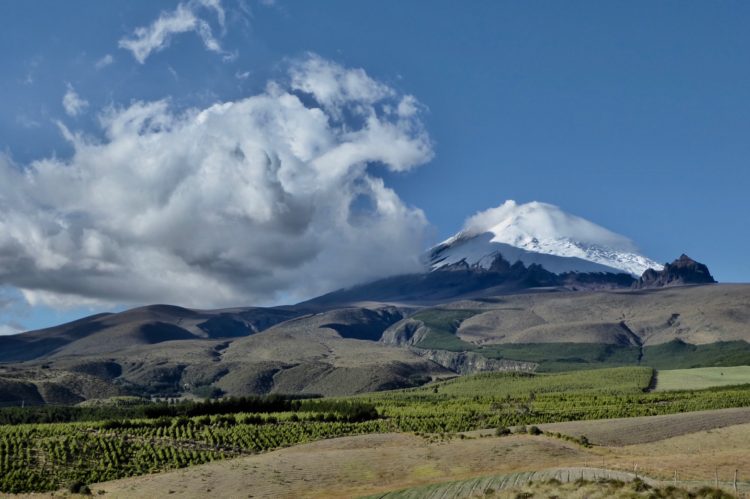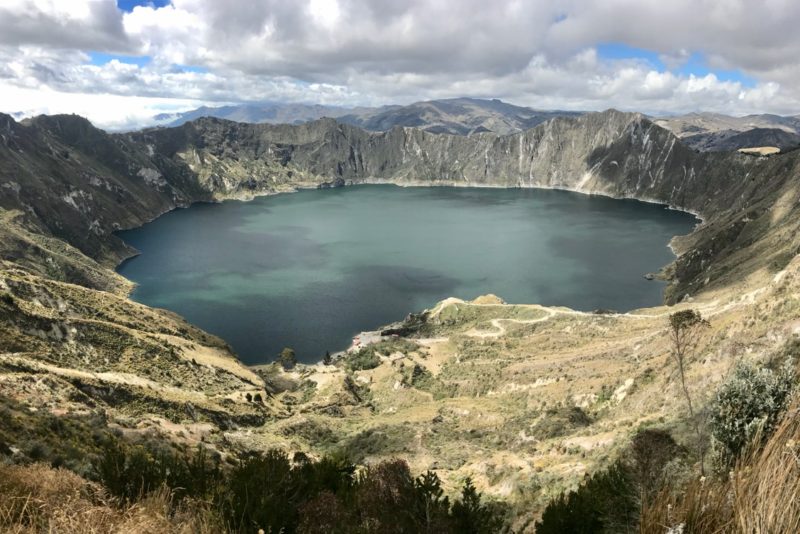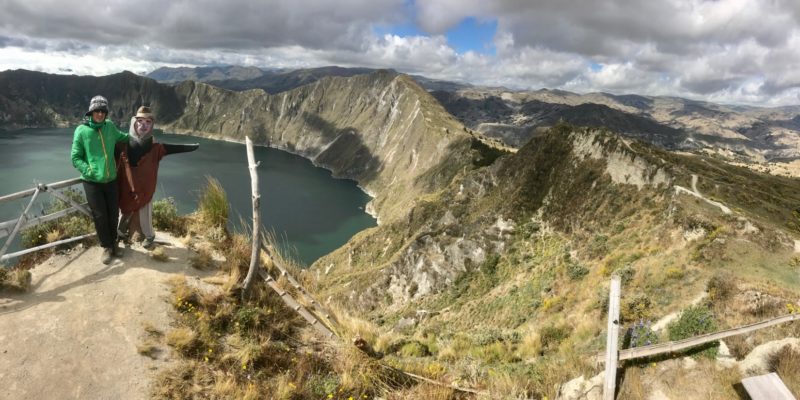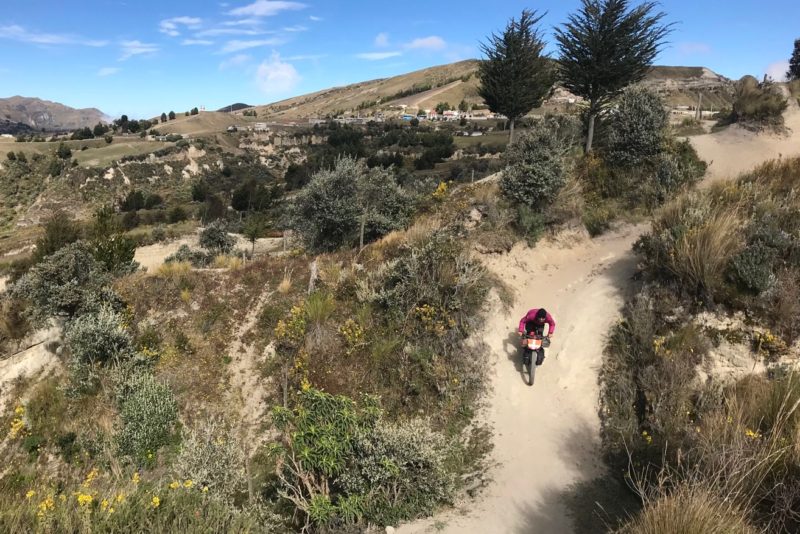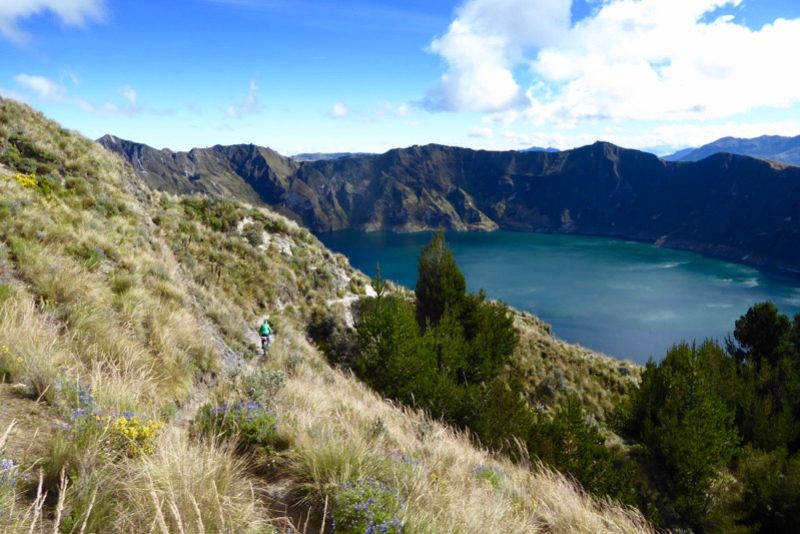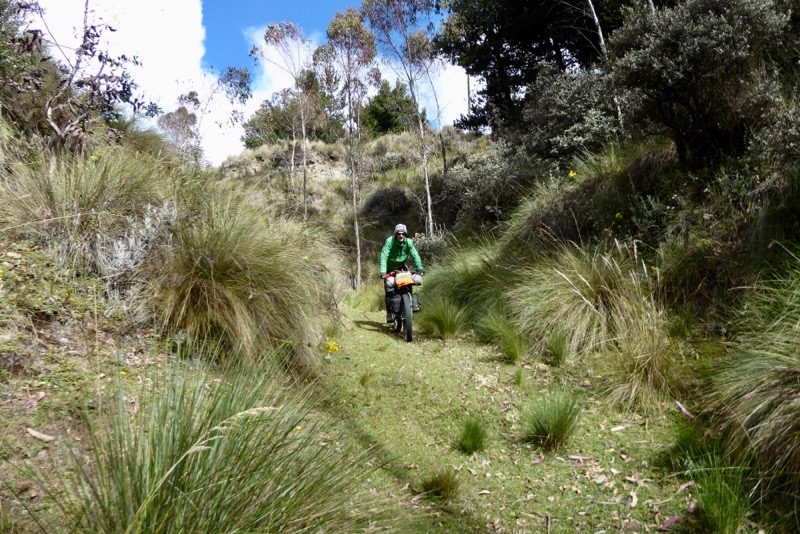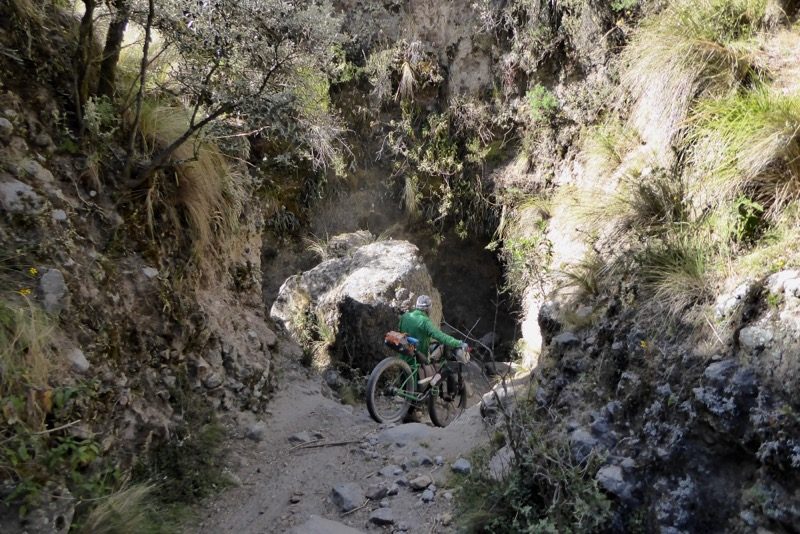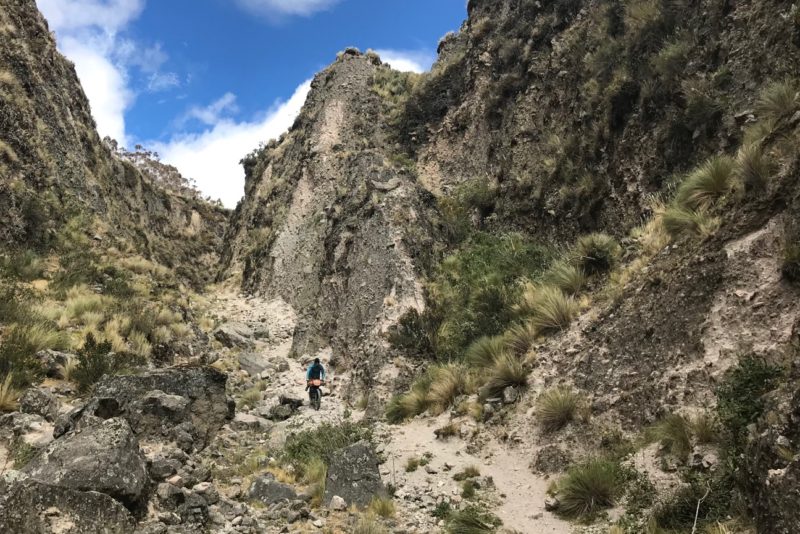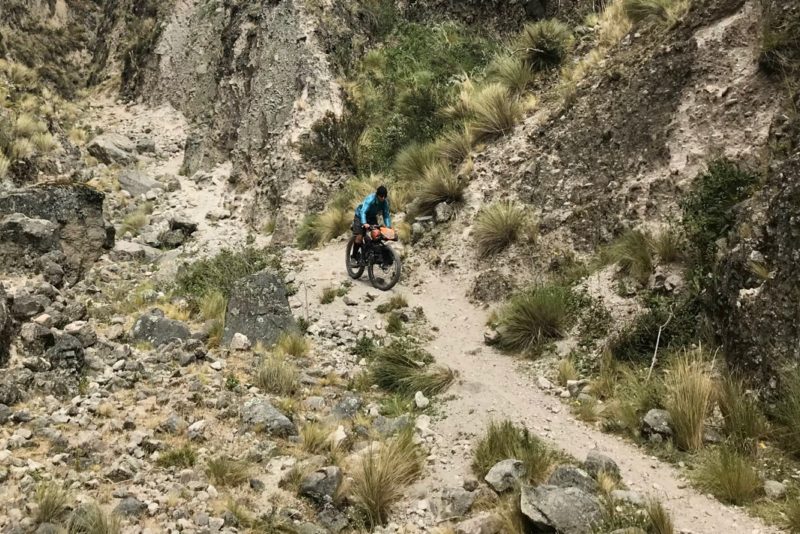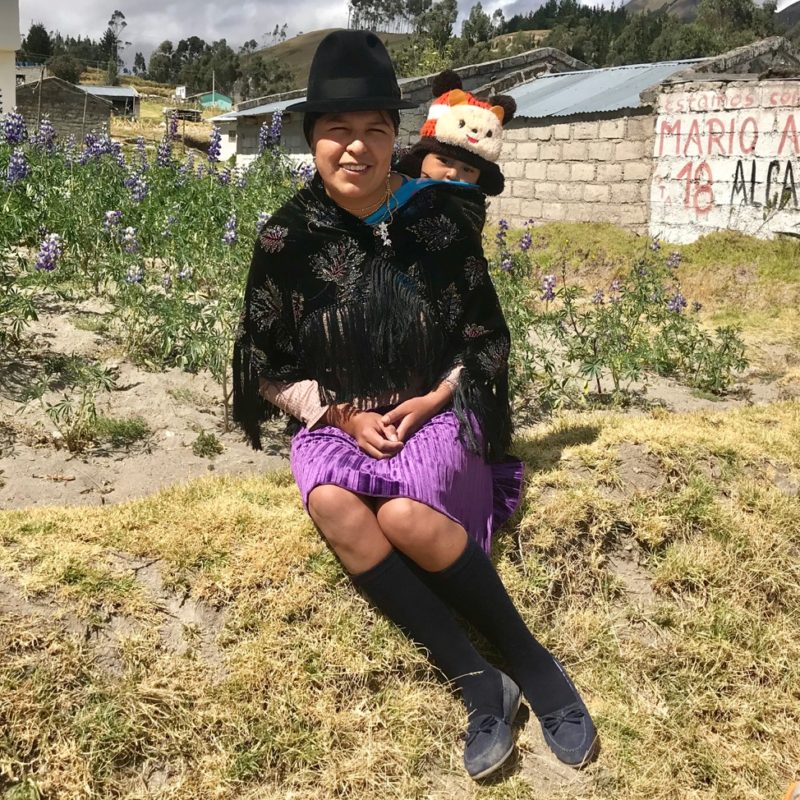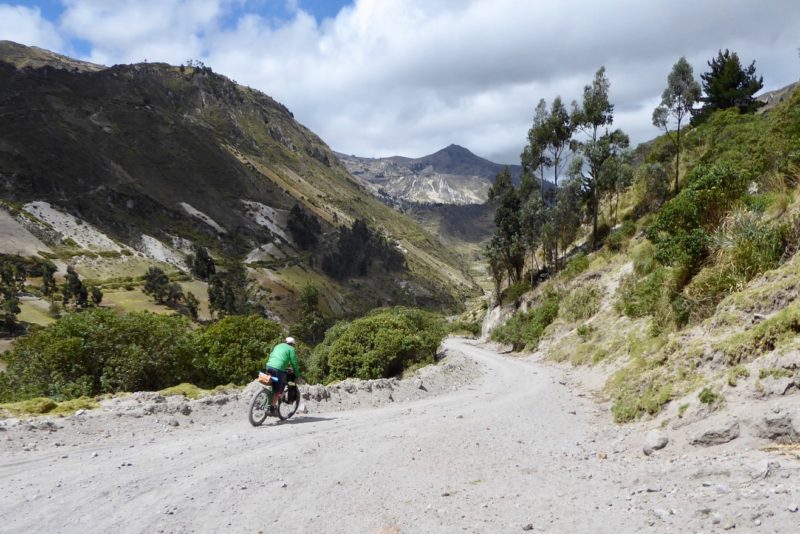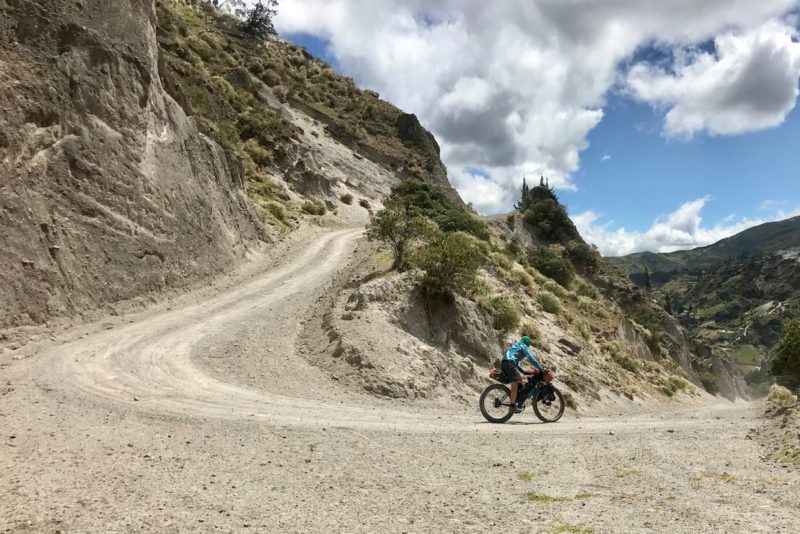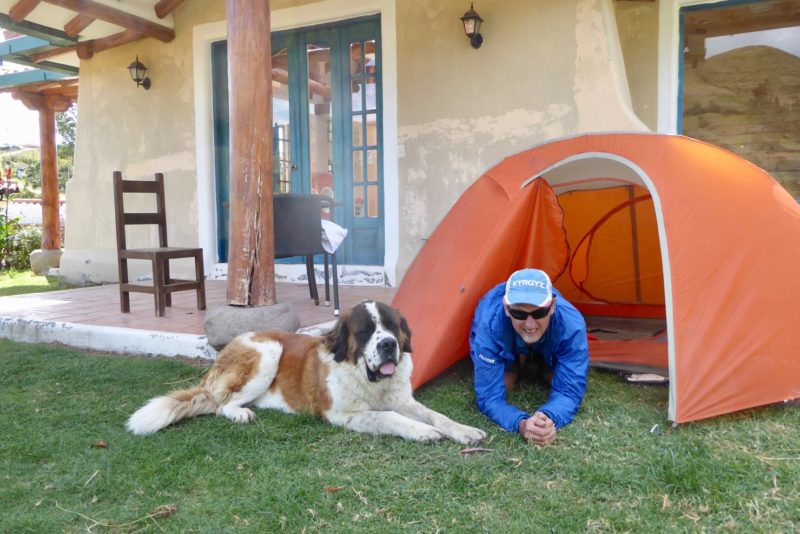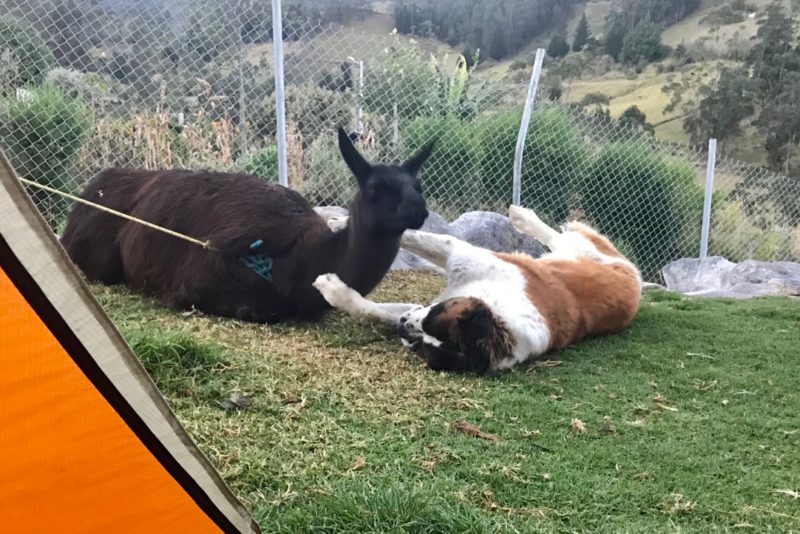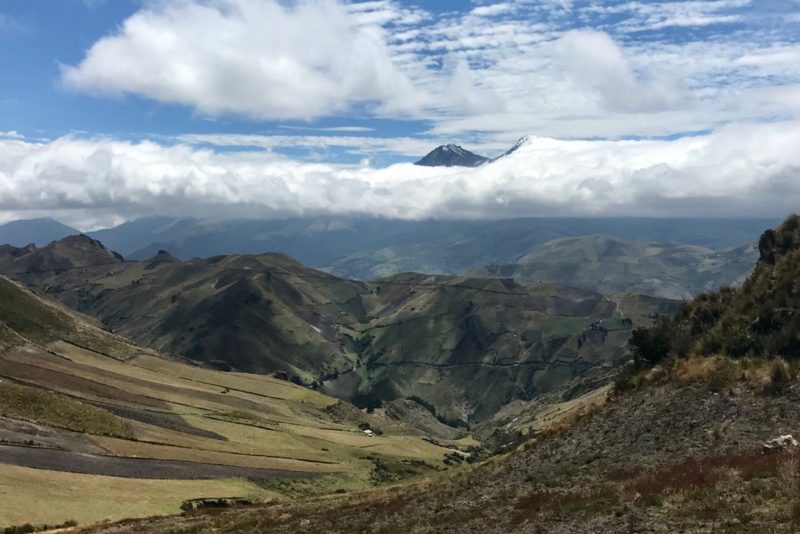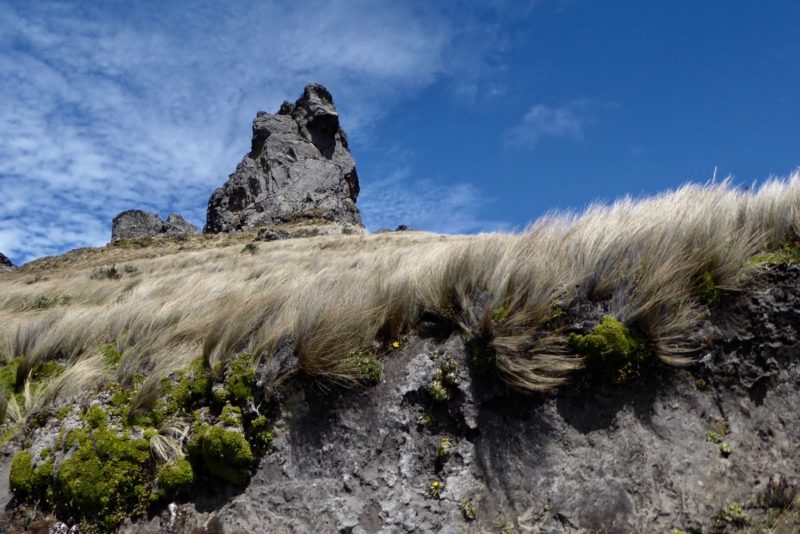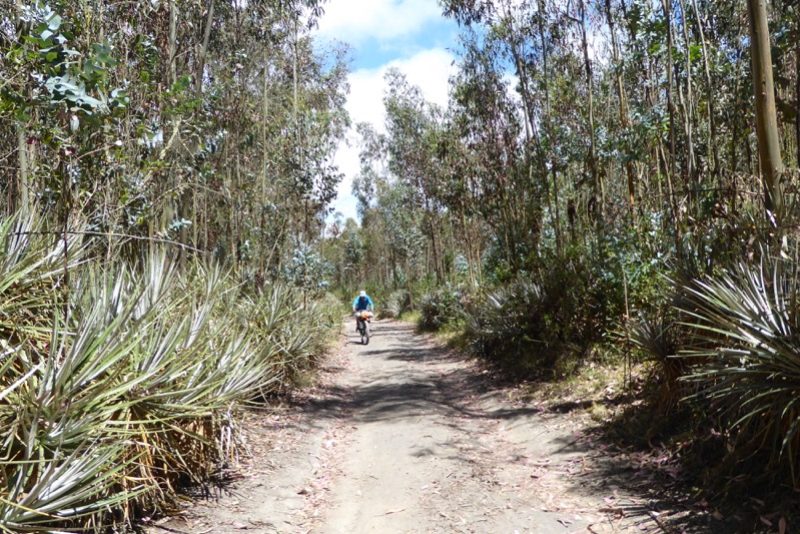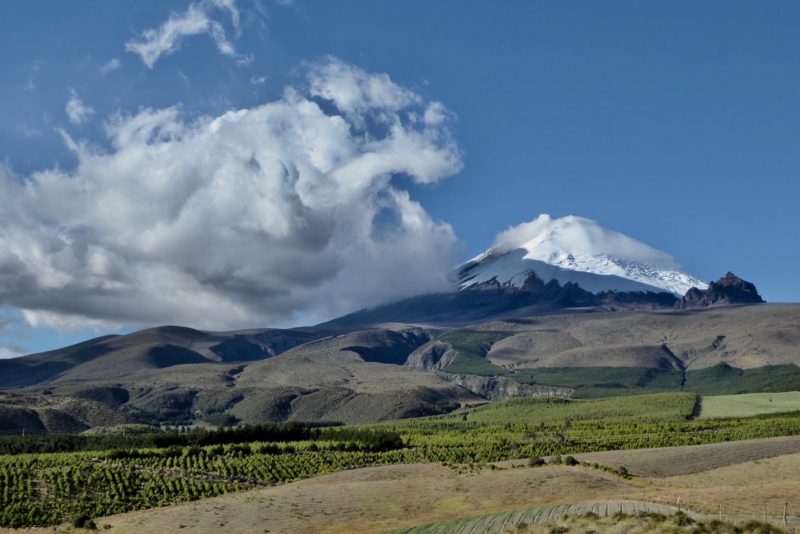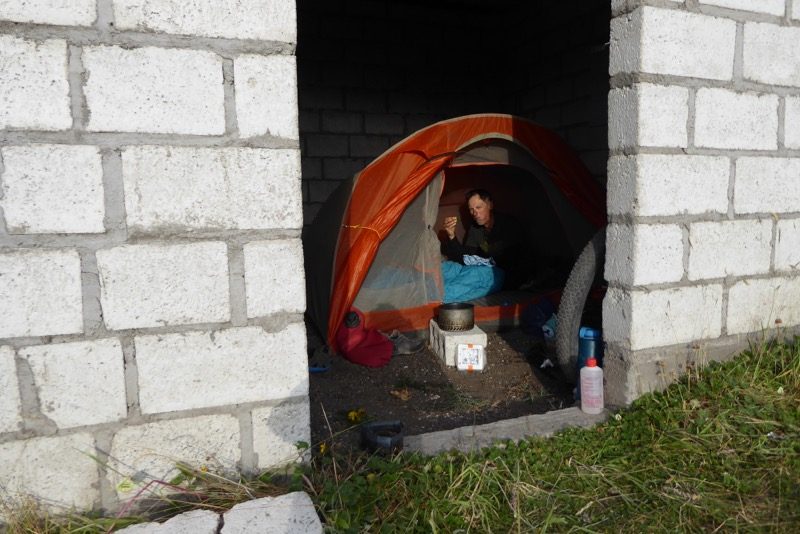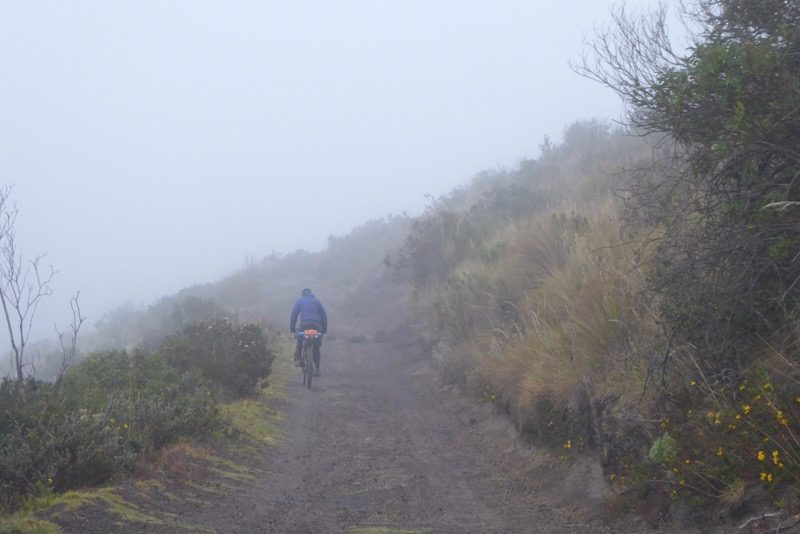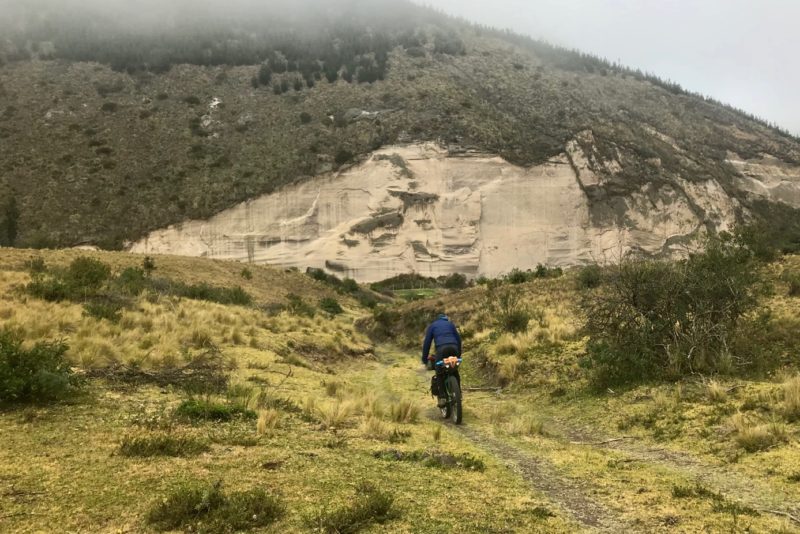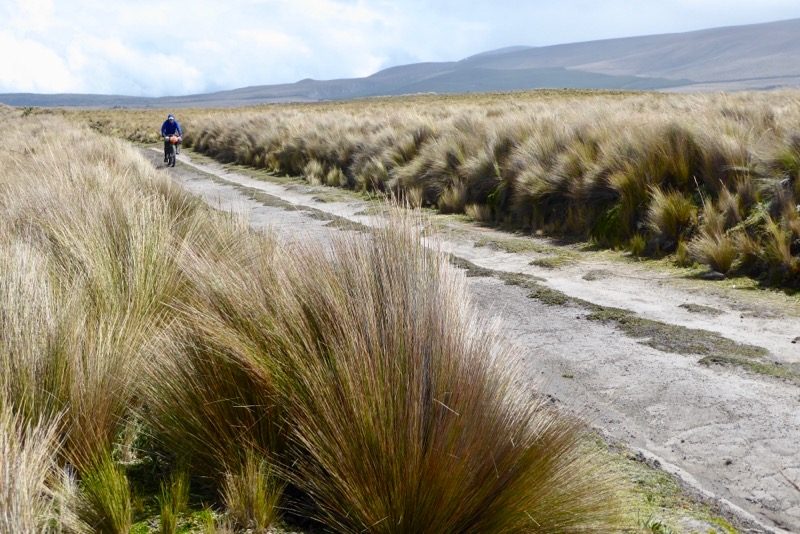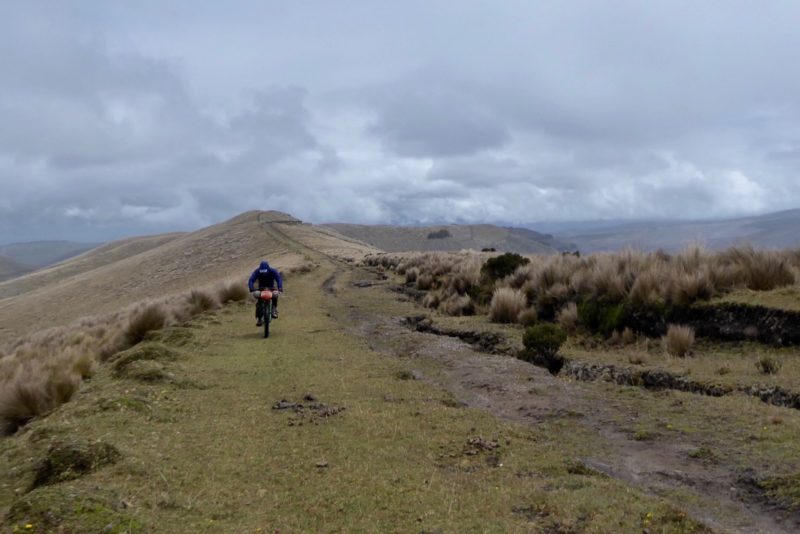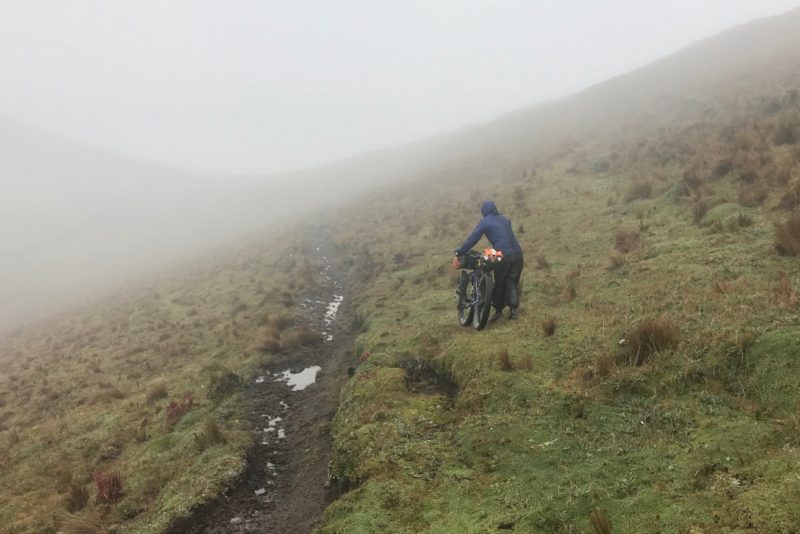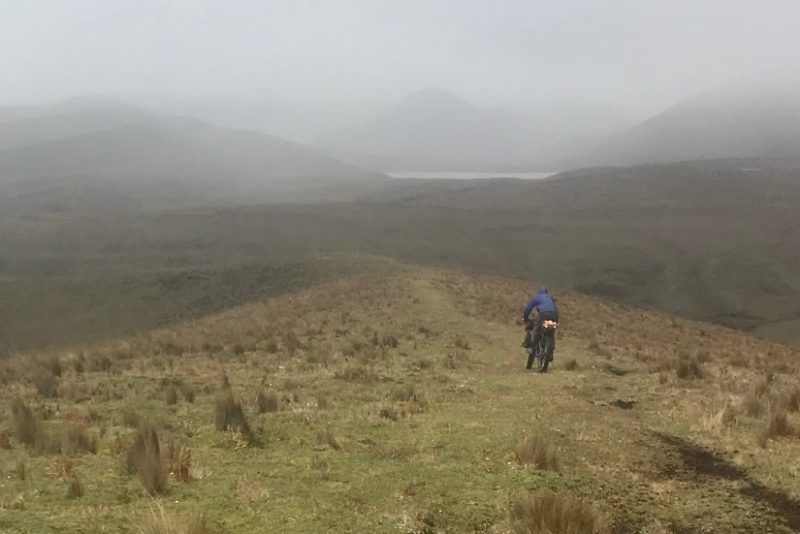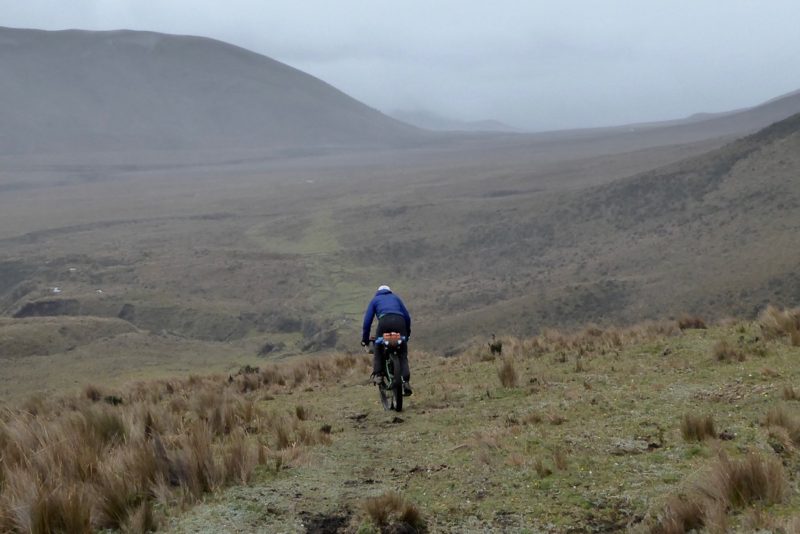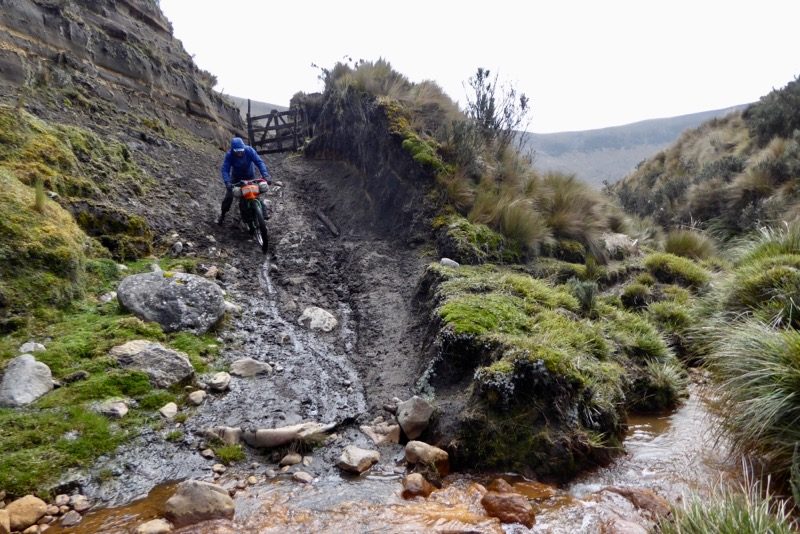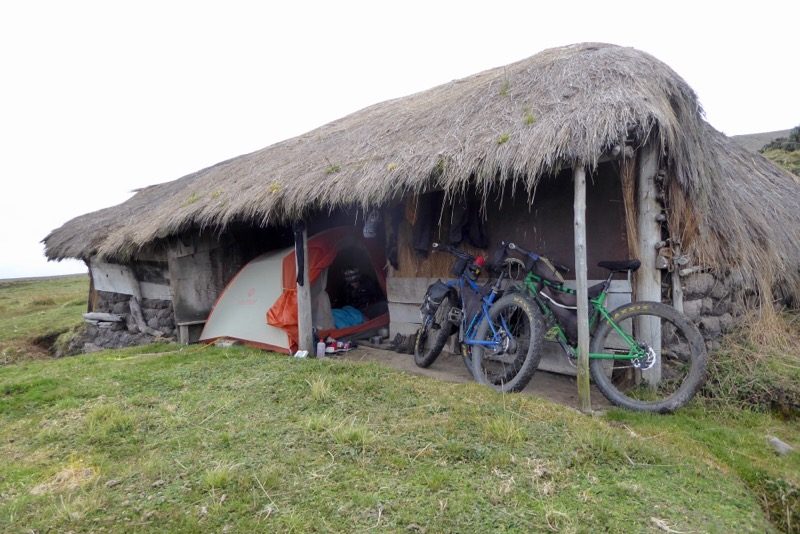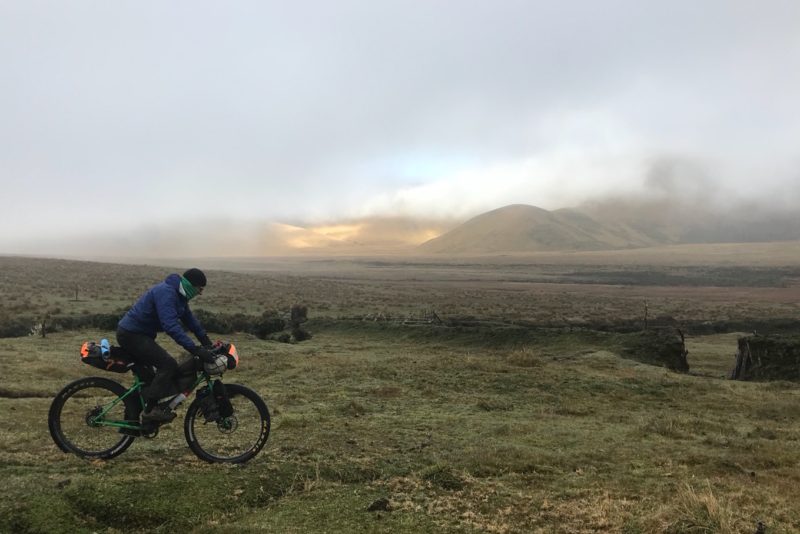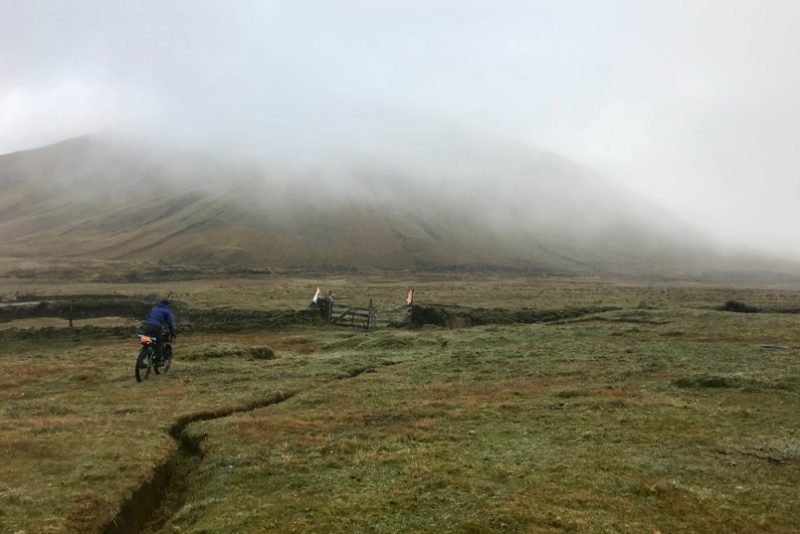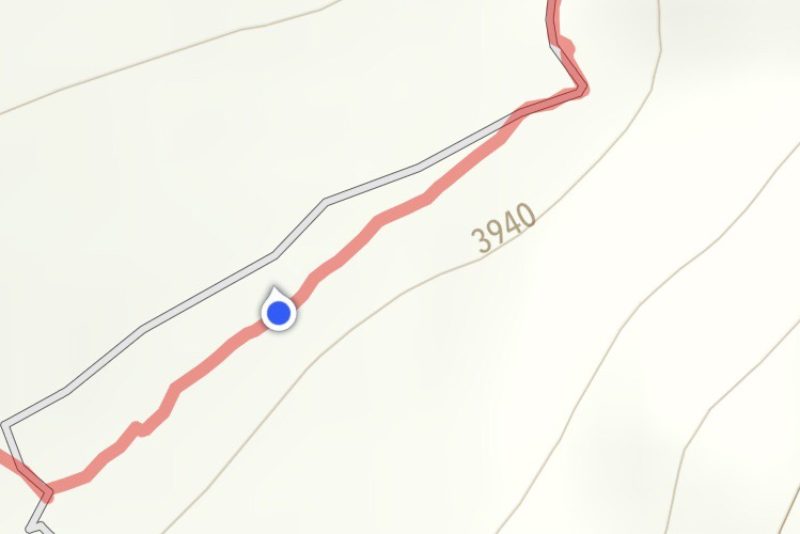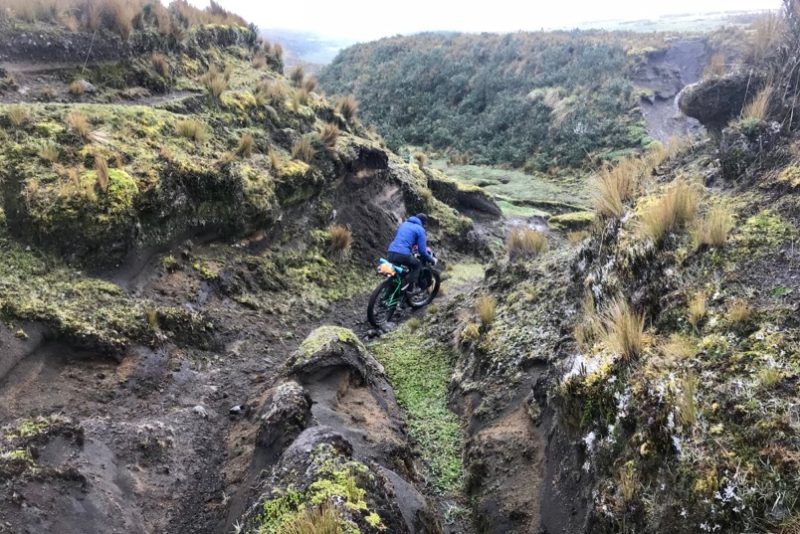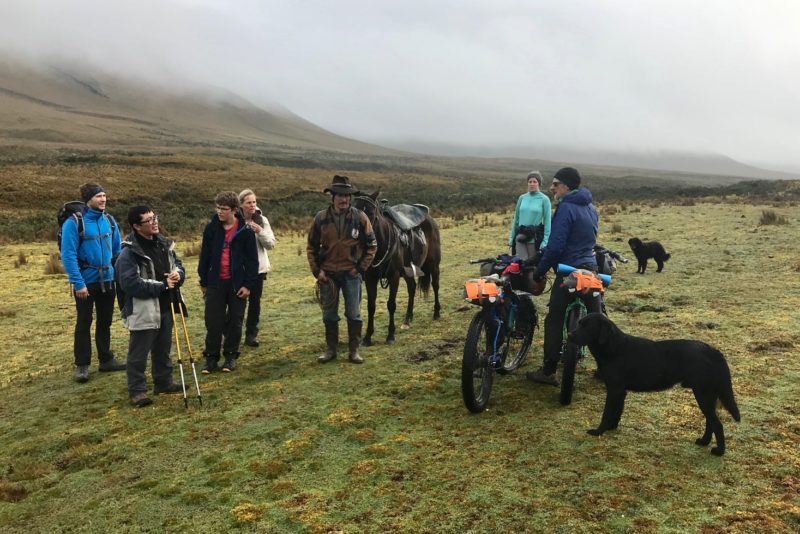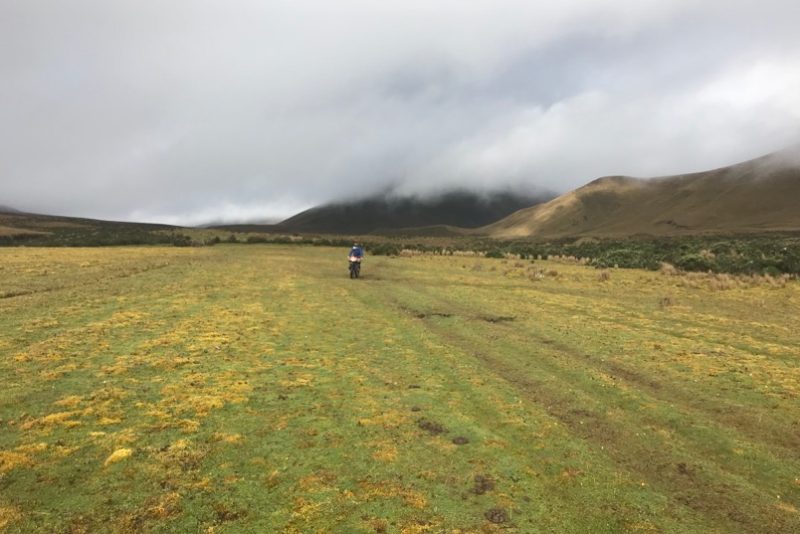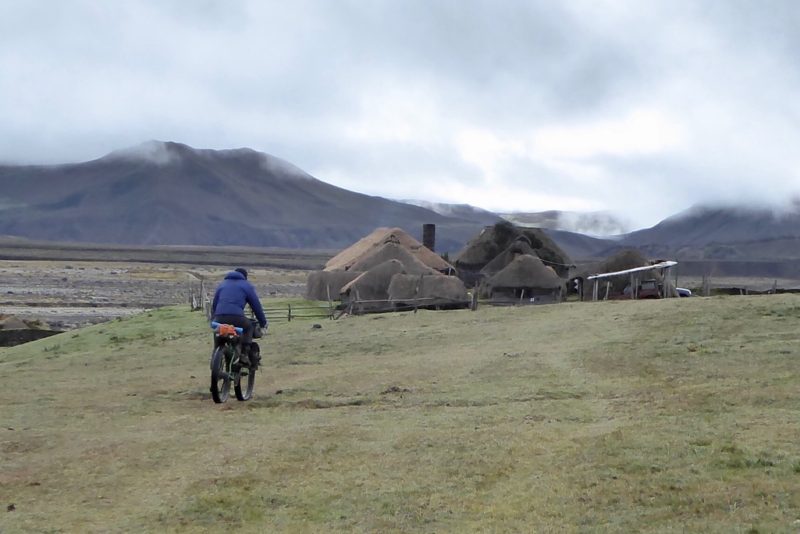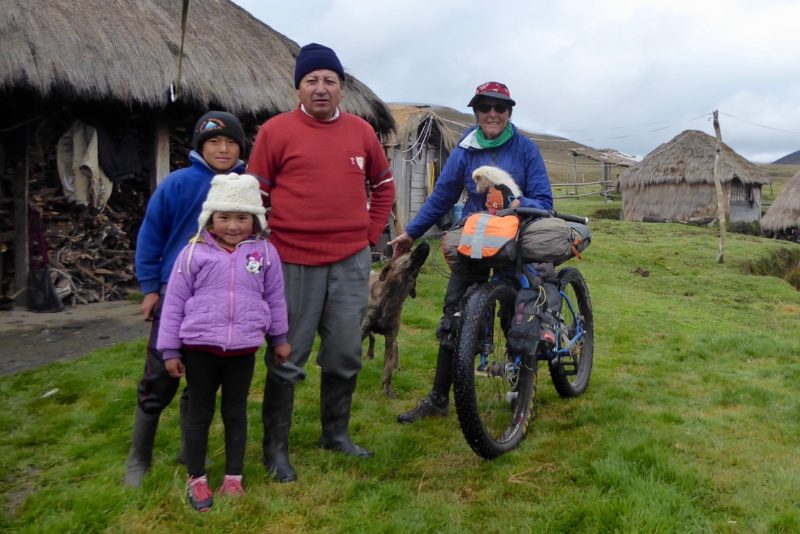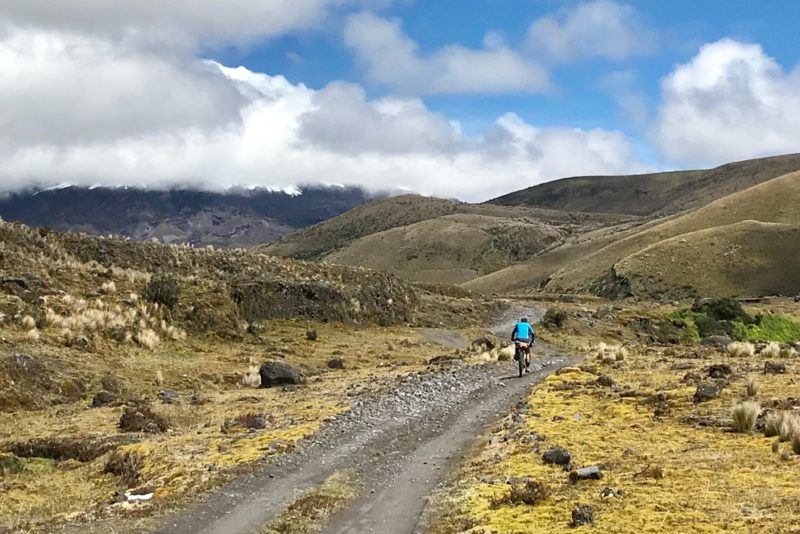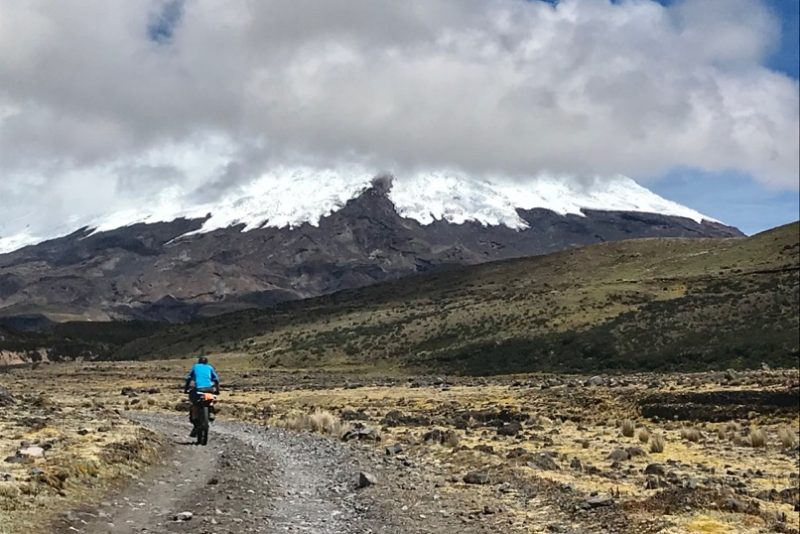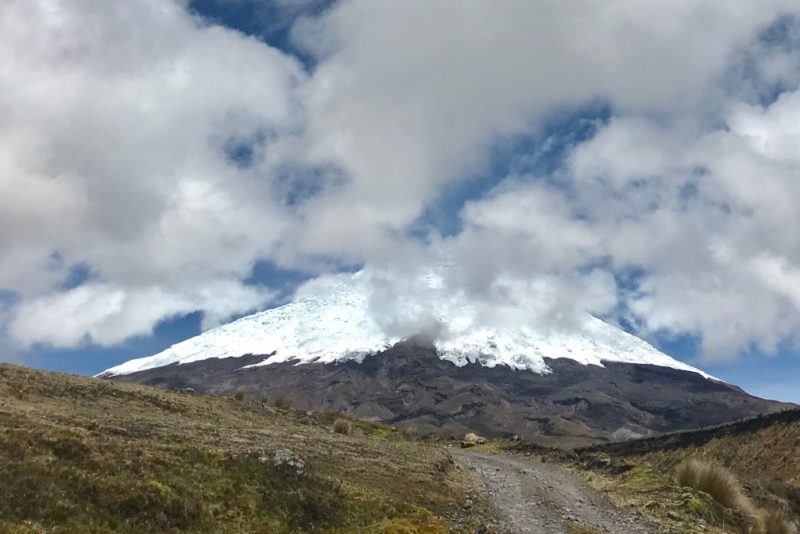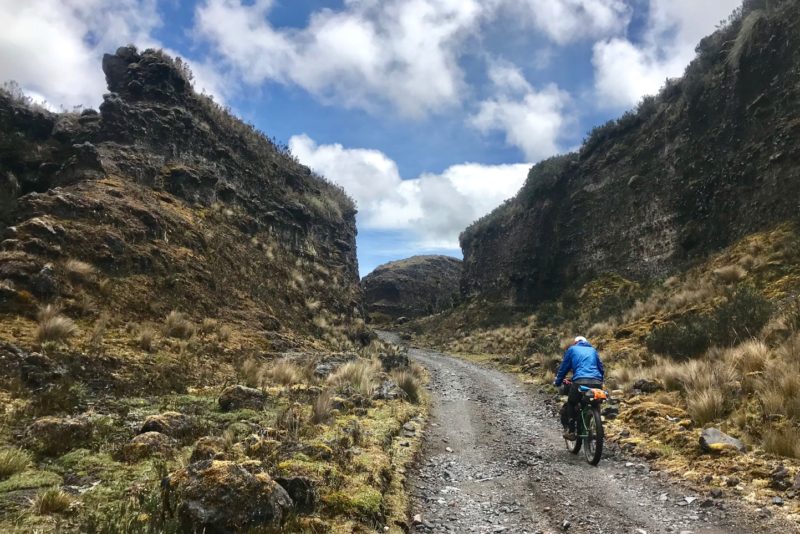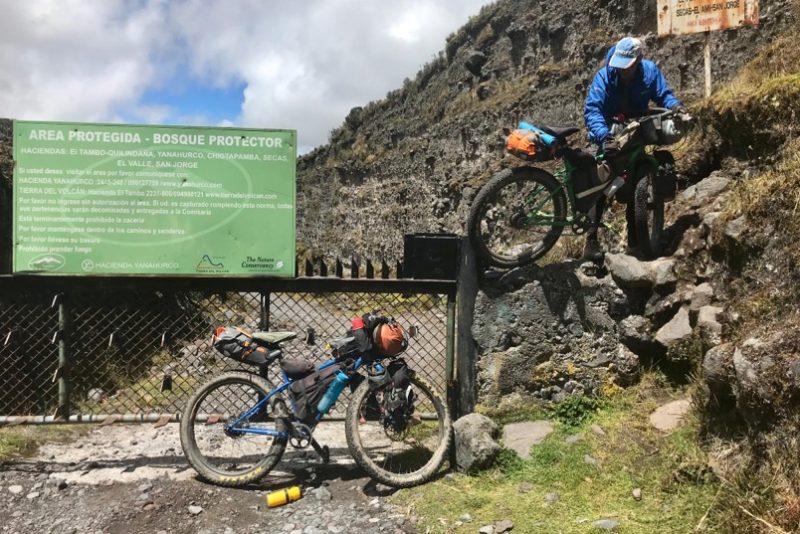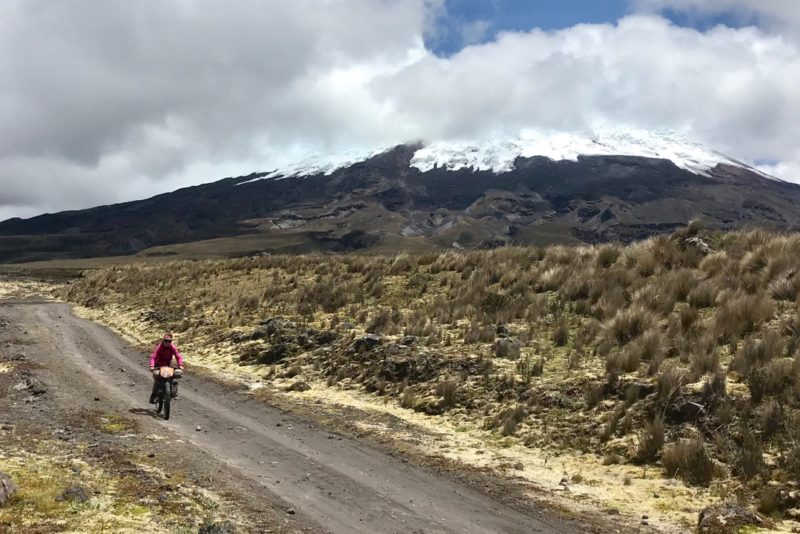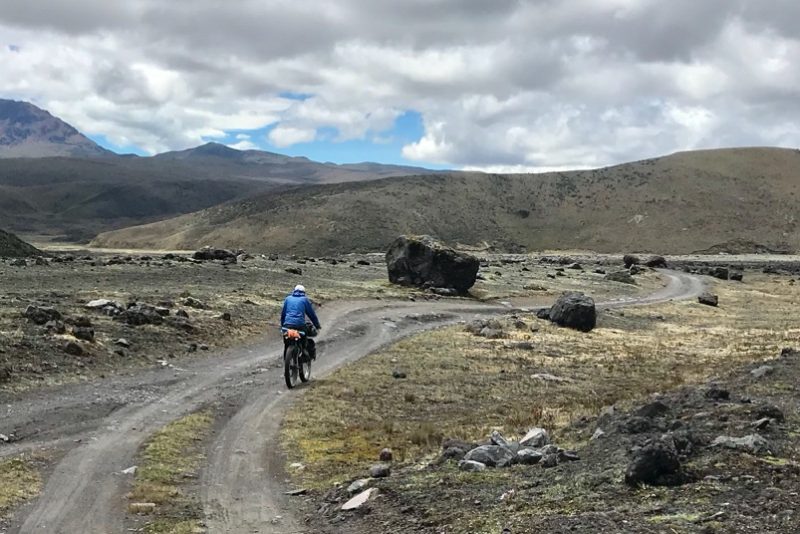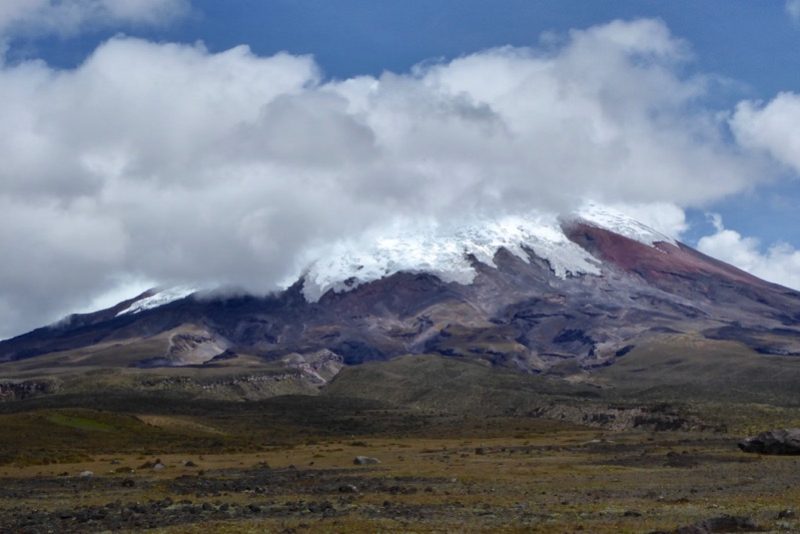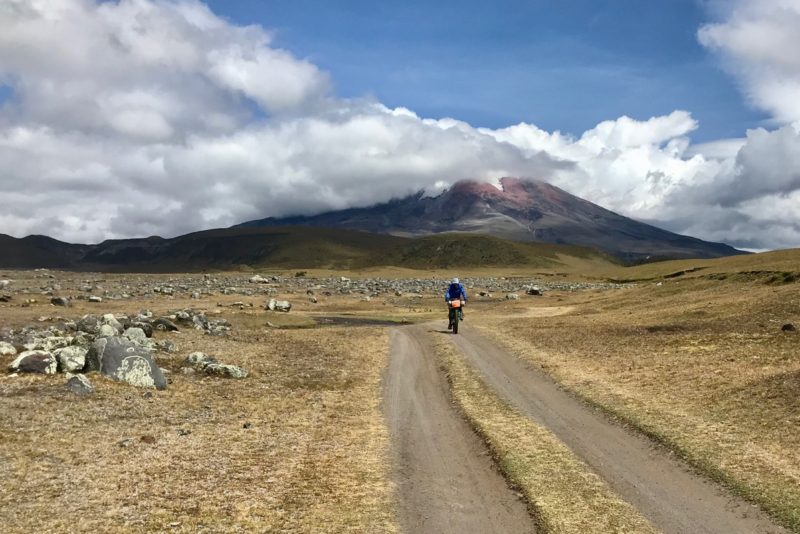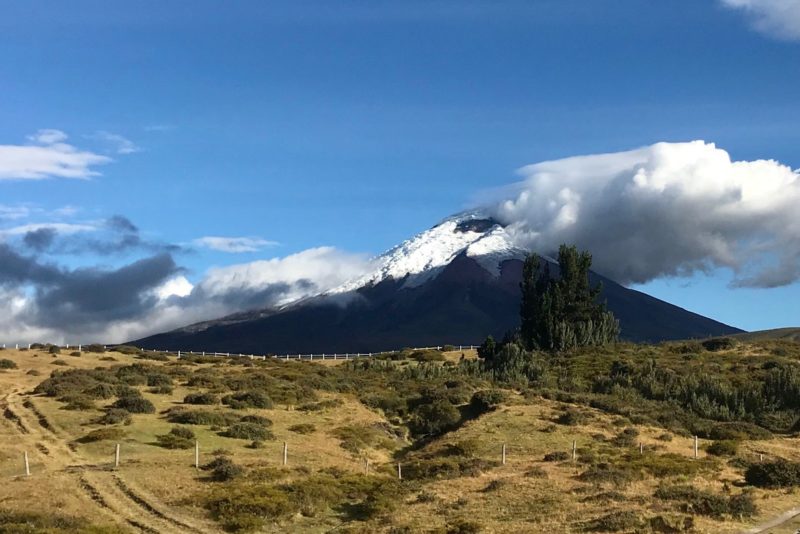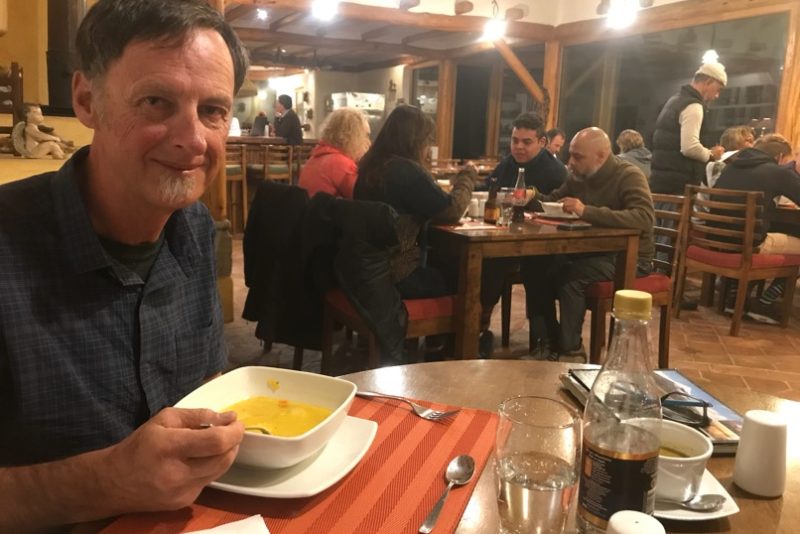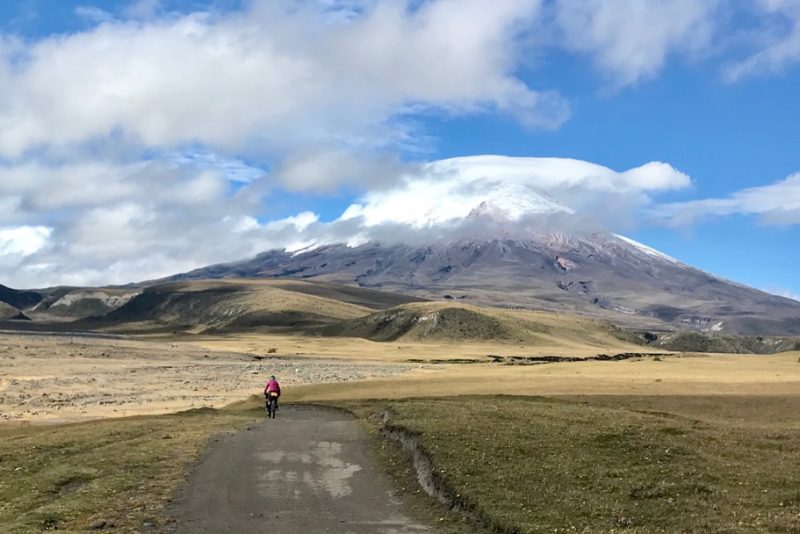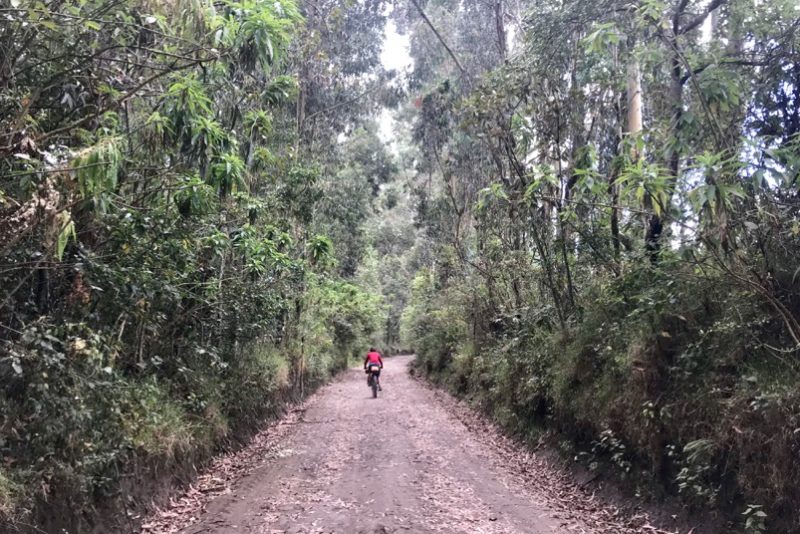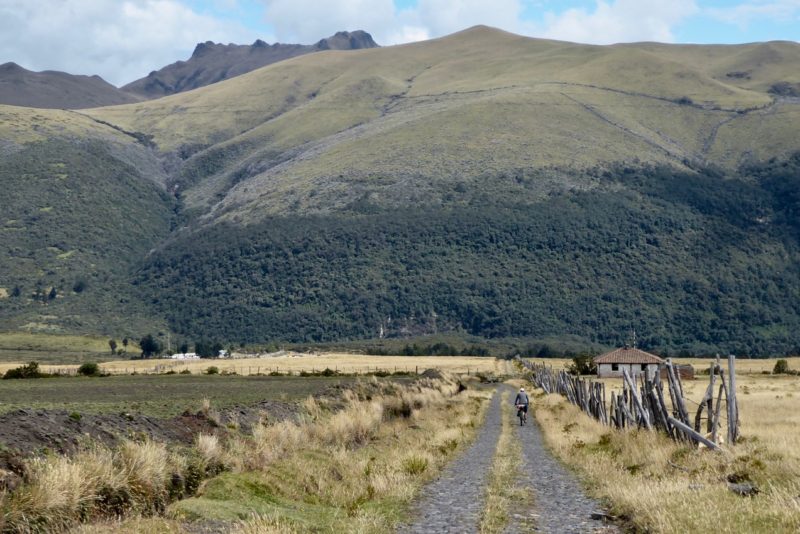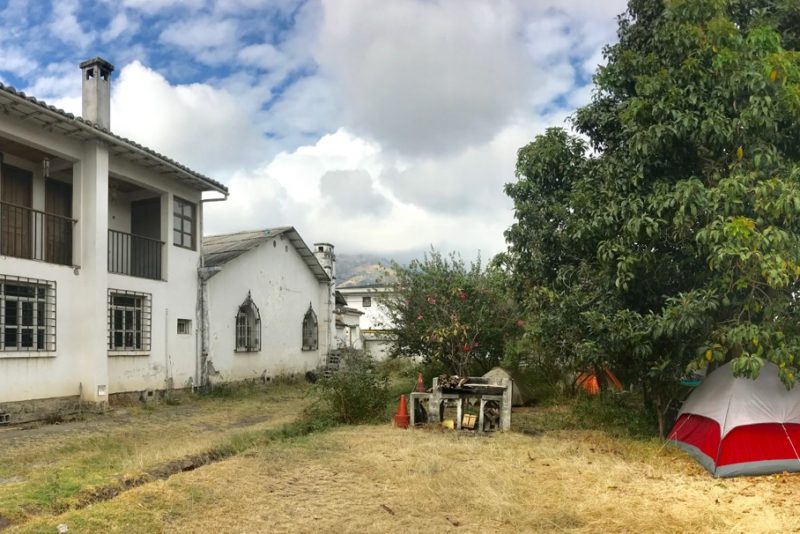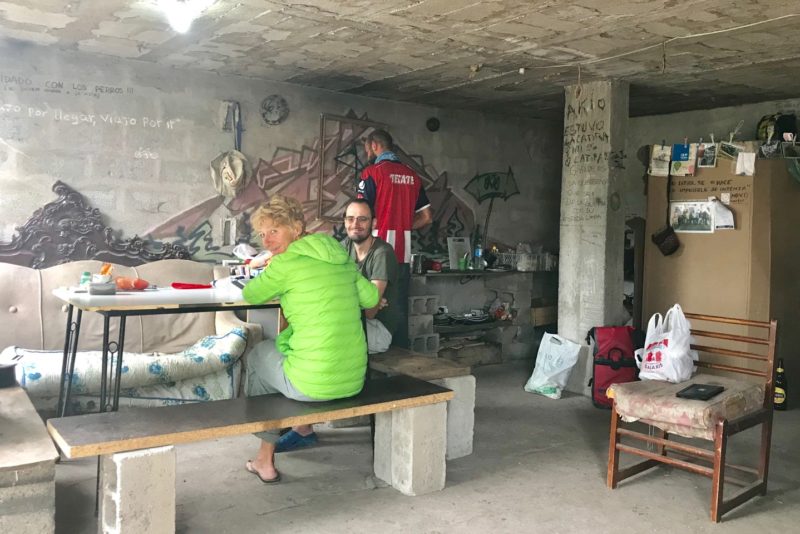Laguna Quilatoa is a flooded volcanic caldera that is 10km around its crater rim, and 300m deep. It was only a short ride from the party town of Zumbahau and we found it to be very beautiful but boy what a windy and cold place at 3850m. Because it is so scenic, with many hiking options, it is also a tourist hotspot with many lodges, and many more being built.
After a night in the small town we tackled a short section of single track around the crater rim before dropping down a cool canyon which in reverse is a tough hike-a-bike. We were spat out onto a gravel road for the ride to the tiny town of Inslivi which has 2 upmarket hostels for all the walkers en route to Quilatoa. Both were full but we were able to camp and included in the fee was dinner, breakfast, a spa pool, sauna, yoga classes, a Saint Bernard and a llama!
Alan opted out of the climb east over the range the next morning (still in recovery mode) and I enjoyed 700m relatively wind free but then had to battle the last 300m to the saddle. The wind was so strong near the top I pushed the last km or so. I met up with Alan in Toacazo and after some lunch we cruised down to Lasso and some cabañas before starting an anticlockwise journey around the classicly shaped Volcán Cotopaxi the next day. We had veered off the TEMBR to the Los Tres Volcanes bikepacking route.
We were dreading the first 50km as it was a due east reach, into the teeth of these seasonal winds. To break it up (and as a ‘rest’ day for me) we had a short day gaining 500m up a sheltered gum tree lined sandy track. We pitched the tent in a deserted open building at 3500m with a fantastic view of the southern aspect of Cotopaxi.
Alas we woke to a foggy morning, but, no wind. We made haste for the 1000m climb, through pine plantation and then exposed tussock ridges. As the road deteriorated so did the weather with wind, rain, low cloud and even a few flakes of snow. It was slow rough travel to the pass pushing over lumpy muddy terrain. The start of the descent necessitated pushing till it became less steep, then we were mostly able to ride, albeit slowly, because of the uneven soft ground and the barely discenable route. When we reached the shelter of a choza we were happy to call it a hard day and retire, pitching the tent under the protection of the roof. Cotopaxi was nowhere to be seen all day.
To beat the weather we had another early start, in the low cloud. With fresh legs we enjoyed the bumpy cruise gradually downhill and chanced upon a small private tourist lodge set amongst some original farm chozas and happy to sell us breakfast. From cycling wet, muddy, wild open paramo to sitting down to scrambled eggs, bread, juice and coffee in a rustic warm lodge, such is the swing of fortunes of a bikepacker.
It got even better…the weather cleared, the mountain appeared and we enjoyed the gradual climb to a pass with a gentle tail wind. The descent to the National park northern entrance was long, smooth and scenic and we found ourselves camped again outside a fully booked fancy lodge,but enjoying the picture window views of Cotopaxi, beautiful food, small lounges with fires and fluffy towels for our hot shower. We were lucky with our day as there are many visitors to this area who never get to see Cotopaxi.
There was new snow on the mountain next morning as we turned our backs to it and cycled north to Tumbaco on the outskirts of the capital city of Quito, losing 1400m of altitude and bumping our way on some of the llumpiest cobblestoned roads to date along the way. At the Casa de Ciclistas Santiago and his family have welcomed cyclists to their property in Tumbaco for 25 years. There is a warm welcome, somewhere to pitch a tent, an area to cook and a cold shower.
We have just a week left till we fly out from Quito to our own wee casa. Our plan is to take a bus to near the border with Colombia and cycle back to Quito till we run out of time…
